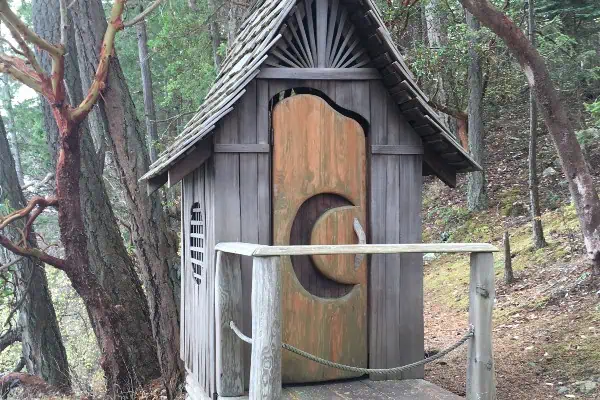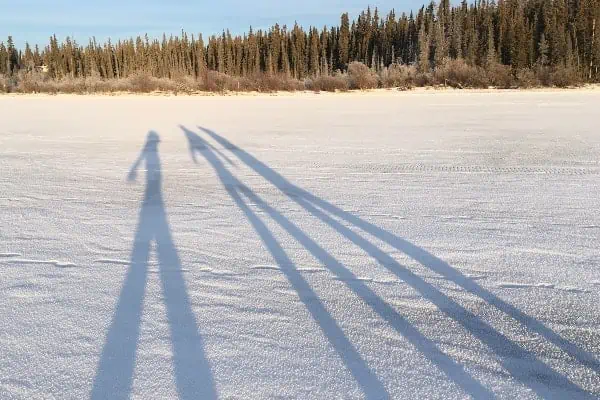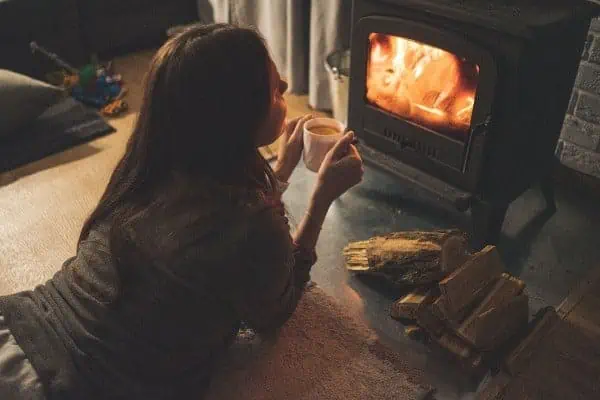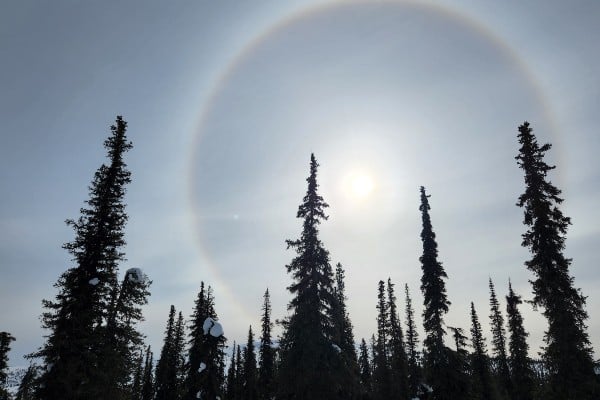“I used to stand at my son’s bedroom window, when he was two or three, and look northward to see stars,” says Forest Pearson, a resident of downtown Whitehorse.
Pearson’s team gathered up the latest research and prepared a white paper to be presented to the City of Whitehorse, ATCO Electric Yukon, Yukon Energy Corporation and a few communities. It was sent out last April.
The research included standards set out by the International Dark Sky Association and calls for the 3,000 Kelvin lighting that appears warmer, more orange.
“The City of Whitehorse said, ‘Oh good, this is timely, we don’t have these standards… thanks for this,’” recounts Pearson.
“The Yukon Energy Corporation was a little more disappointing. They said they are going to keep doing what they are doing.”
But, ATCO surprised them with an email that said, “Okay, thanks. Sure, we will adopt the 3,000 Kelvin.”
Jay Massie, manager of ATCO Electric Yukon, says he remembers receiving the research paper.
“It was quite good to see,” he says today. “It was in line with the direction we were heading.”
As of one year ago, LEDs will be exclusively used for new streetlights.
“Since (the pilot project five years ago), like with any technology, they’ve gotten better,” says Massie. “They were blue, but now they are closer to the orange colour of the old High Pressure Sodium (HPS) lighting.”
When replacing streetlights, the Transposition Association of Canada standards call for uniformity. HPS has an orange glow and, now, the LEDs are manufactured with a warm glow.
But Pearson’s work isn’t done yet. His team needs to spread the word that “directional” lighting is important, too. Lights need to illuminate just the roadway.
Driving above the Alaska Highway, on Robert Service Way toward the Hamilton Blvd extension, he points to the streetlights on the right. They are directional so the light shines down onto the road, but because the top of the lamp is covered, the light does not shine upwards. It leaves the sky above the streetlight dark.
On the left, the old HPS lighting remains.
Getting out of the car at the roundabout, looking down, you can see the HPS lights, but not the new directional lights. The HPS lights are not covered at the top, so light beams up as well as down. But looking down onto the directional lights, you only know they are there because the road underneath is lit – looking down onto them you don’t see light shining up. Yet both sides of the road are well-lit.
This is a test that the Yukon Government asked for. As an alternative to the blue LED lights Massie wanted to try out the latest technology before using them on the Alaska Highway.
Another step to combat light pollution is for communities to consider if they need streetlights on roadways that don’t have pedestrians. Or turning some off after a certain hour at night.
This will benefit Yukon tourism as night sky viewing will be enhanced. The skyglow from Whitehorse, itself, extends from Carcross to Marsh Lake and to halfway down the Takhini Valley.
“I was in Portland, Oregon, a big city, but I could see the Milky Way,” says Pearson. “They only have street lighting at intersections.
“A good measure for suburban areas is can you see the Milky Way.”
Returning from our trip to the top of Robert Service Way, we pass by the Yukon Energy Corporation hydro facilities. Pearson looks out his window and sighs, “Why do they light up an empty parking lot?”




